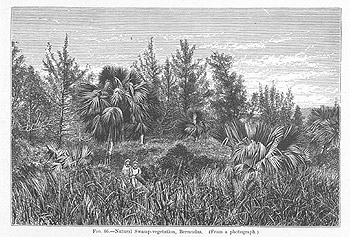 Surveying Voyages of Ships Adventure and Beagle
Surveying Voyages of Ships Adventure and Beagle The Physical Geography of the Sea
The Physical Geography of the Sea The Depths of the Sea
The Depths of the Sea The Voyage of the "Challenger."
The Voyage of the "Challenger." Deep-Sea Sounding And Dredging
Deep-Sea Sounding And Dredging Norwegian North-Atlantic Expedition
Norwegian North-Atlantic Expedition The Fisheries of the United States
The Fisheries of the United States Three Cruises of the "Blake"
Three Cruises of the "Blake" The Gulf Stream: Methods of Investigation
The Gulf Stream: Methods of Investigation Aus den Tiefen des Weltmeeres
Aus den Tiefen des Weltmeeres
The Voyage of the 'Challenger.' The Atlantic: A Preliminary Account of the General Results of the Exploring Voyage of H. M. S. 'Challenger' During the Year 1873 and the Early Part of the Year 1876
This was the first major publication associated with Britain's historic H.M.S. Challenger expedition of the 1870s. The worldwide voyage made many discoveries and laid the early foundations of oceanography. Among the discoveries were more than 4,000 previously unknown animal species that scientists catalogued during the course of the expedition.
This excerpt includes the title page and pages 253-262 from Volume I of The Voyage of the 'Challenger.'
You may need to download the Flash Player to view the book. To navigate through the book in Flash mode, click once on any page corner; click on any corner, hold, and drag the page; or use the menu at the bottom of the image. In the menu, the arrows will flip the book pages, the magnifying glass will allow you to zoom in on the page and scroll up and down the page, the printer icon will allow you to print the page in view, and the icon to the far right will allow you to view thumbnails of the included pages.
You can also view a non-Flash version.
The British Admiralty commissioned the H.M.S. Challenger expedition to explore the conditions of the deep sea around the world. From December 7, 1872, to May 24, 1876, the Challenger traveled 68,890 nautical miles, zigzagging across the Southern, Atlantic, and Pacific oceans measuring water depth, temperature, and currents; sampling the bottom sediment, water column, flora and fauna; and observing the weather. Since the Challenger spent half of its time in various ports of call, the expedition reported on the peoples, plants, and animals of places all over the world.
The official report of the Challenger expedition took 19 years to complete and fills 50 volumes! C. Wyville Thomson, the expedition's civilian director of the scientific staff, published this preliminary two-volume account of the expedition to ensure that its more important results were made public. While this account covers only the expedition's work in the Atlantic, it paints a complete picture of the types of work done and the data collected during the Challenger's travels. Interestingly, in the foreword, Thomson writes about the Challenger expedition validating many of the conclusions that he had drawn from his earlier work during expeditions on the H.M.SS. Porcupine and Lightning. He considered his earlier book about these expeditions, The Depths of the Sea, published in 1873, an "introduction to the series of volumes giving an outline of the 'Challenger' circumnavigating expedition."

The Challenger expedition stopped at many ports around the world. It reported that the island of Bermuda (above) "is undulating and well wooded," "cumbered with a luxuriant vegetation of palmettos, mangroves, junipers, and ferns," and a source of potatoes, tomatoes, and onions for the New York market. (v. I, p. 340)
As with most accounts of oceangraphic expeditions of the 19th century that marvel at the sea, Thomson evokes the beauty and wonder of the oceans in passages such as the following:
"At night the phosphorescence of the sea was particularly brilliant, the surface scintillating with bright flashes from the small crustaceans, while large cylinders and globes of lambent light, proceeding probably from Pyrosoma and some of the medusae, glowed out and slowly disappeared in the wake of the vessel at a depth of a few feet." (v. I, p. 186)
And, there are other highlights. One includes the map of the Atlantic Ocean that graces the frontispiece of volume II. This was one of the first maps published to clearly show what is today called the Mid-Atlantic Ridge, as well as the other major basins and deeps of the Atlantic Ocean. The narrative also includes many wonderful accounts of creatures encountered during the expedition. One account that stands out is the episode of penguins guarding their eggs by biting and pecking at a landing party until drawing blood! Browsing this book gives unexpected pleasure, as well as insights into an important 19th century oceanographic expedition that set a benchmark for explorations that followed.
- Author: Sir (Charles) Wyville Thomson (1830-1882)
- Date Published: 1877
- Publisher: Macmillan
- Location: London
- Length:
Volume I, 424 pages
Volume II, 396 pages
View Complete Rare Book
The Voyage of the 'Challenger.' The Atlantic: A Preliminary Account of the General Results of the Exploring Voyage of H. M. S. 'Challenger' During the Year 1873 and the Early Part of the Year 1876.
Volume
I (pdf, 336 MB)
Volume
II (pdf, 384 MB)
